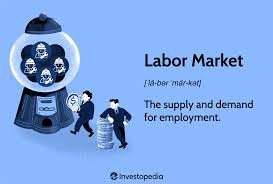Artificial intelligence (AI) and automation have been at the forefront of technological advancements for years, reshaping industries and how work is performed. In 2024, these technologies have made significant strides, and their impact on global labor markets is both profound and complex. From job displacement to the creation of new opportunities, the role of AI and automation is transforming economies and workforces around the world.
1. Job Displacement and Transformation
One of the most discussed effects of AI and automation is the displacement of jobs, particularly in sectors that rely heavily on manual and repetitive tasks. In 2024, industries such as manufacturing, retail, transportation, and logistics continue to experience significant automation. Robots and AI-driven systems are taking over tasks that were once performed by humans, such as assembly line work, cashier services, and even driving.
According to a 2023 report by the World Economic Forum, automation is expected to displace around 85 million jobs by 2025. In 2024, the effects of this prediction are becoming more evident. However, it is important to note that while automation eliminates certain jobs, it also creates new roles, particularly in areas related to technology development, maintenance, and oversight. Workers in manufacturing, for example, are transitioning to roles that involve managing and maintaining automated systems, though these new jobs often require upskilling.
2. Emergence of New Jobs and Skills
While job displacement is a key concern, AI and automation are also responsible for creating new jobs that did not exist a decade ago. In 2024, demand for roles in AI development, machine learning engineering, data analysis, and cyber security continues to grow rapidly. Companies across various industries are investing in AI and automation technologies to improve efficiency, and as a result, they require skilled professionals to develop, implement, and manage these systems.
A McKinsey study from late 2023 emphasized the importance of upskilling and reskilling to meet the demands of the evolving job market. By 2024, many governments and organizations have recognized the need for large-scale workforce training programs. Countries like Germany and Singapore are leading the way in offering state-sponsored reskilling initiatives, ensuring that workers displaced by automation can transition into new roles in the technology-driven economy.
Additionally, soft skills such as creativity, emotional intelligence, and critical thinking are increasingly valued as automation takes over more technical tasks. Jobs in sectors like healthcare, education, and the creative industries, where human interaction and empathy are critical, are less susceptible to automation and continue to grow.
3. Global Labor Market Inequalities and Challenges
The adoption of AI and automation is not uniform across the globe, leading to inequalities in labor markets between developed and developing countries. In advanced economies like the United States, Japan, and parts of Europe, AI integration is widespread, supported by strong infrastructure and financial resources. In contrast, many developing countries are still in the early stages of adopting automation technologies.
In 2024, this gap has widened, exacerbating inequalities in income and employment opportunities between regions. While countries with strong technological ecosystems benefit from increased productivity and economic growth, those without the resources to implement automation face challenges in remaining competitive. The International Labour Organization (ILO) has warned that the rapid adoption of AI in wealthier nations could further marginalize workers in low-income countries, particularly in sectors such as agriculture and manufacturing.
Moreover, the rise of AI in global labor markets raises ethical and regulatory questions. Concerns about data privacy, algorithmic bias, and the societal implications of widespread job automation are becoming central topics in policy discussions. Governments worldwide are grappling with how to regulate AI to protect workers while encouraging innovation. In 2024, more countries are beginning to implement frameworks to ensure AI is used responsibly and inclusively.
Conclusion
As AI and automation continue to evolve in 2024, their impact on global labor markets is both challenging and promising. While job displacement remains a significant issue, the creation of new roles and the need for advanced skills provide opportunities for economic growth. However, disparities between developed and developing nations pose challenges that require global cooperation and strategic planning. By investing in education, reskilling, and ethical AI frameworks, countries can navigate the shifting landscape of work and ensure that the benefits of automation are widely shared across the global workforce.
